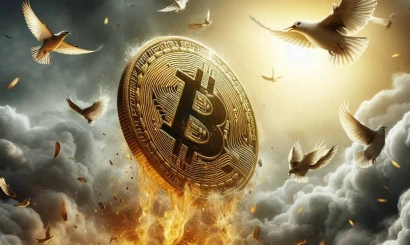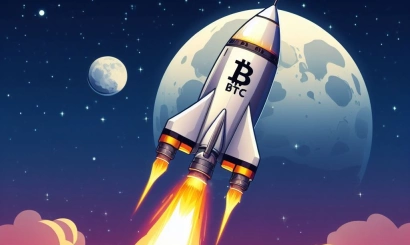How the field of stacking will change after the Ethereum update. Experts' opinions
Experts talked about trends in the cryptocurrency stacking niche after the Shapella update and its impact on crypto-asset prices
The price of the cryptocurrency Ethereum (ETH) crossed the $2,000 mark for the first time since August 2022 after a major blockchain update of the second-largest cryptocurrency took place, and fears of a massive outflow of funds from the network were not confirmed. Since the beginning of the year, the coin has grown by more than 60%.
Coin Access.
The April 13 update to the Ethereum blockchain, under the working name Shanghai as part of the Shapella update group, gave investors the ability to withdraw coins they had pledged as collateral in a special Beacon Chain smart contract, launched back in 2020, on a first-come, first-served basis. This gives them transaction validator status on the network and allows them to receive rewards in the form of new coin issuance, a process called staking.
Accumulated rewards have also become available for withdrawal to wallets. According to analyst service Nansen, in the first 12 hours after the activation of the update, investors withdrew only 0.3% of the 18 million ETH placed in the contract for staking.
Thursday the 13th. How the market will be affected by Ethereum's crucial update
"Contrary to the fears of many market participants, the ETH exchange rate tested $2k. It's safe to say that the update was received positively by traders and investors. The possibility of withdrawing coins [from stacking] is limited because it can put pressure on the price," comments Vladimir Cherpichnikov, head of Exmo.me exchange.
Only 43.2 thousand ETH can be unlocked in a day. About 170 thousand ETH will be sold at the market price in the near future, but even if coins will be withdrawn at the maximum allowed daily limit, this figure fits into the average inflow of ETH on exchanges and will not critically affect the price of coins. It's important to understand that many validators are just now starting to test the new feature, withdrawing exactly the earned funds and not the 32 ETH deposit. Accordingly, they plan to validate transactions further, the expert explains.
According to analyst company Coin Metrics, about 1.2 million ETH are expected to be withdrawn from stacking in the next five days, the equivalent of about $2.3 billion at current prices. About $36.7 billion in Ethereum coins remain in the Beacon Chain.
The price of ETH could experience fluctuations in the coming weeks as some investors rush to withdraw the coins and sell them. But those who were not ready to freeze their assets before, on the contrary, may decide to place coins in a smart contract, argues co-founder of ENCRY Foundation Roman Nekrasov. Most likely, the upgrade of the network in the medium to long term will lead to an increase in the value of the coin, but before that a period of increased volatility is possible, the expert predicts.
Stacking as a service
Self-stacking Ethereum involves setting up equipment and making a mandatory minimum deposit of 32 ETH. But even more private investors use stacking services on cryptocurrency exchanges and decentralized platforms that provide a service called liquid stacking.
What is liquid stacking? And how to earn on it.
In this case, exchanges or services act as a validator, combining users' funds into a single pool with a user-friendly interface and rewarding them for stacking in proportion to the money they have invested. The largest stacking platform Lido, as a validator, manages about 31% of all ETH in stacking. The top five largest validators also include crypto exchanges Binance, Coinbase, and Kraken.
The main advantage of stacking services from exchanges is simplicity, explains Cherpichnikov. The user doesn't need to understand the intricacies, it's enough to "press a couple of buttons and be sure that the stacking works". The interest is paid by the exchange, which also assumes rights and responsibility. If you have any difficulties, you can write to the support service and get an answer in a short time. This is always suitable for newcomers, so the popularity of stacking through exchanges or platforms will not suffer much from Ethereum updates.
The ability to unlock coins is unlikely to have much effect on the popularity of stacking services, Nekrasov agrees. Their target audience is not so much those investors who weren't willing to freeze their assets, but those who simply don't have 32 ETH to place in a smart contract. The demand for the service, if anything, will subside insignificantly, the expert believes. Co-founder of 0xprocessing Nikita Vassev holds a similar opinion. According to his observations, many owners of cryptocurrency who hold it long-term use stacking and liquidity blocking "for ownership in the maintenance of the network" and additional income in the form of accrued interest.
Kraken leads in the number of requests to withdraw coins from stacking. The U.S. exchange accounts for more than 86% of the total amount of ETH "in the queue" for withdrawal. The exchange was forced to stop its US stacking service and pay a $30 million fine when the Securities and Exchange Commission (SEC) ruled that its stacking service was the equivalent of illegal securities sales. Because of such bans in the U.S., it is the decentralized platforms, which the SEC can't technically prohibit the use of coins, Cherpichnikov said.
Decentralized liquid stacking services allow you to invest in stacking coins from Ethereum and other blockchains running on the Proof-of-Stake (PoS) algorithm and receive derivative tokens of equal value in return, which are also traded on cryptocurrency exchanges and can be used for additional earning strategies. Examples of such platforms include Lido, Rocket Pool, Stakewise, and others. Many of them issue their own tokens that entitle them to vote in decentralized autonomous organizations (DAOs) or receive discounts on service fees.
DAO scandal. Does blockchain voting stand a chance outside the crypto world
According to Vassev, the investment appeal of such platforms' tokens depends not only on their set of services but also on their overall marketing, positioning, turnover, and market trends. Some platforms do not have a token, but this does not prevent them from attracting users. For example, stake. fish is popular due to the experience and reputation of f2pool, a well-known brand in the niche of mining pools.
Tokens of major stacking platforms also benefited from Ethereum's successful update. The tokens of Lido (LDO), Rocket Pool (RPL), and Stakewise (SWISE) showed growth of 6-7%.
- FTX token doubles on news of bankruptcy restart plan
- Binance's share of the crypto market decreased by 16% in the first quarter of 2023
- Thursday the 13th. How the market will be affected by Ethereum's crucial update
- New Reputation. What will happen to the Solana ecosystem and the price of the SOL token?
- MicroStrategy has added $29 million worth of bitcoins
- FTX explores restart of bankrupt cryptocurrency exchange
- Prospects and challenges of bitcoin mining in 2023






